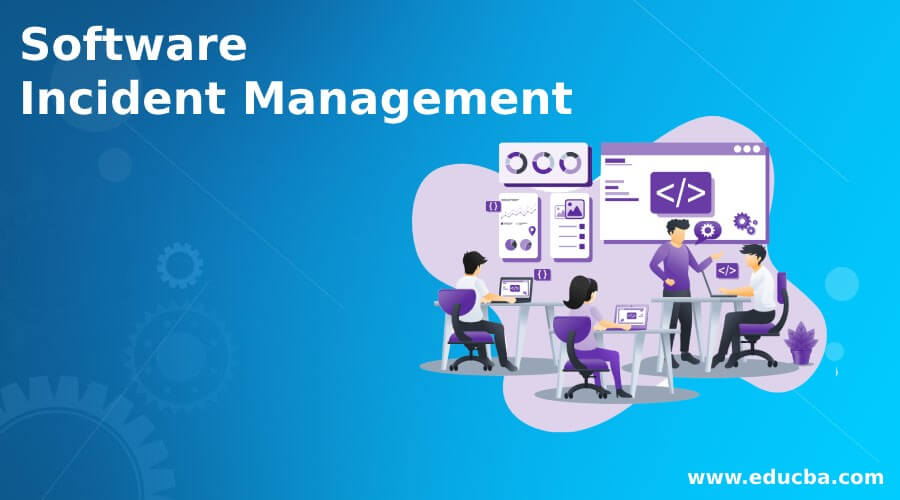
Introduction to Software Incident Management
Software Incident Management is the process of actively managing and resolving incidents throughout their lifecycle stages. It involves addressing discrepancies or issues reported by users and ensuring their timely resolution. The central component of this management process is the Incident itself, which refers to a problem or anomaly identified by a user and reported to the relevant team or individual for resolution within a specified timeframe.
How does Incident Management Work in Software?
A typical Software Incident Management begins with a person or a team who uses the software and finds misbehavior in the software system. Occasionally, issues may arise in legacy systems or third-party systems integrated with the main software unit. Incidents encompass any issues that arise in the software system, regardless of whether they occur in legacy systems or third-party components, highlighting common legacy system pain points that may affect software functionality. Software users can raise incidents, typically using a software incident management tool.
These incidents are then directed to the person/ team who created the functionality if it is an ongoing development process. Like any other management process, the Incident Management process also consists of multiple lifecycle stages, which are imperative for a flawless incident processing flow, to ensure the software product’s quality.
Software Incident Management lifecycle
The processing flow of the Software Incident Management Lifecycle includes eight stages, which may vary in name depending on the incident management tool utilized. In contemporary incident management tools, these stages are often consolidated, and certain functionalities like incident assignment and priority assignment are automated to enhance the efficiency of the process.
Below are the common Incident Management Lifecycle stages,
- Create
- Categorize
- Prioritize
- Assignment
- Defining the Tasks
- Time Limit/ Escalation
- Resolution
- Close
1. Create
When a user finds a malfunction in a software product and/ or the integrated systems connected to the said software, an incident can be created by the user. The user can be from the internal team, the maintenance coordinator, the end-user, the client, or even the vendor. Traditionally, one has to log in to the Incident management tool to create an incident for the concerned software professional teams. Whereas, the evolving technological world has provided much simpler ways to create the incidents, such as via a phone call, an email, an SMS, a chatbot, or using the query forms on the web page dedicated to the software in the form of a single sign-on or a self -service portal.
2. Categorize
The successfully created Incidents are then categorized based on the issue type, which is then sent down for sub–categorizing for the respective area of technical expertise. An incident can fall into a few categories: insufficient CPU memory, an IC chip failure, network connectivity failure, time-lapse, screen inactive, window responsiveness, database connectivity failure, etc.
3. Prioritize
Incident prioritization involves determining the priority of an incident based on factors such as the potential functional impact, the urgency for resolution, and the number of systems affected. This evaluation is carried out using a priority matrix, and the following levels are commonly used for prioritizing incidents:
- Critical
- High
- Medium
- Low
4. Assignment
Based on the category and the priority set for an incident, the next step is to assign the incident to a person or team. The assigned person or team will hold full responsibility from here on out until the incident is resolved during the incident management process.
5. Task Definition
Task Definition is created by the person to whom the incident is assigned, and it consists of the steps & various activities to resolve the incident effectively. In this stage, the tasks can be made up of one or more activities, where a simple resolution might require only one activity, and a complex issue can naturally have more than one activity.
6. Time Limit/ Escalation
After the assignment and task definition, the assigned person is responsible for defining a specific service level agreement or an SLA, which will indicate the time limit fixed for reaching a resolution for the incident. When an incident fails to meet the specified time limit or Service Level Agreement (SLA), it undergoes an escalation process.
7. Resolution
The next stage in the incident management process flow is to attain the resolution for the issue logged as an incident. The resolution of an incident within the defined Service Level Agreement (SLA) is achieved by adhering to the assigned person or team’s tasks. The resolution of an incident can be considered successful when the issue is no longer observable in the software application.
8. Close
Once the resolution is complete, the issue is re-checked or retested, after which the incident can be closed.
Conclusion
Software Incident Management involves recording and managing different deviations or discrepancies detected in a software module or the entire software application. It aims to effectively handle unexpected disruptions that may arise, potentially impacting critical functionality and the overall quality of the software product.
Recommended Articles
This is a guide to Software Incident Management. Here we discuss an introduction to Software Incident Management, how it works, along with its lifecycle. You can also go through our other related articles to learn more –
